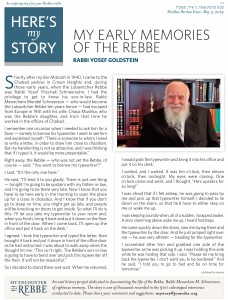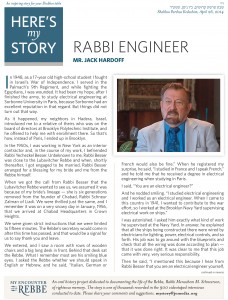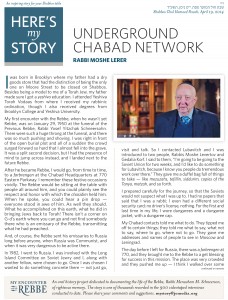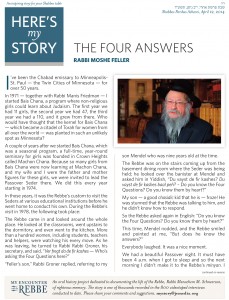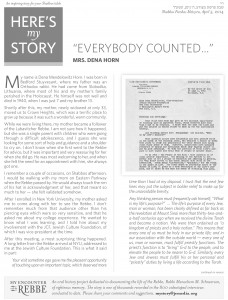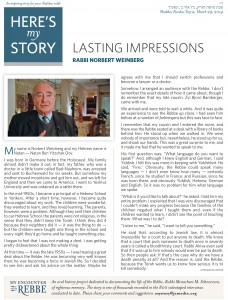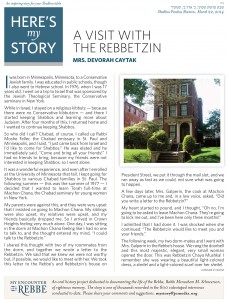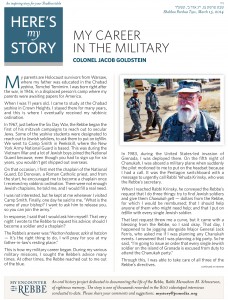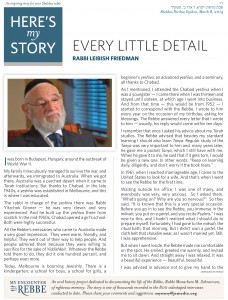Shortly after my Bar Mitzvah in 1940, I came to the Chabad yeshiva in Crown Heights and, during those early years, when the Lubavitcher Rebbe was Rabbi Yosef Yitzchak Schneersohn, I had the privilege to get to know his son-in-law. Rabbi Menachem Mendel Schneerson – who would become the Lubavitcher Rebbe ten years hence – had escaped from Europe in 1941 with his wife, Chaya Mushka, who was the Rebbe’s daughter, and from that time he worked in the offices of Chabad.
I remember one occasion when I needed to ask him for a favor – namely to borrow his typewriter. I went to see him and explained myself: “There is someone to whom I need to write a letter, in order to draw him close to chasidism. But my handwriting is not so attractive, and I was thinking that if I typed it, it would be more presentable.”
Right away, the Rebbe – who was not yet the Rebbe, of course – said, “You want to borrow my typewriter?”
I said, “It’s the only one here.”
He said, “I’ll lend it to you gladly. There is just one thing – tonight I’m going to be upstairs with my father-in-law, and I’m going to be there very late. Now I know that you have to be here early in the morning to open the place up for a class in chassidus. And I know that if you don’t go to sleep on time, you might get up late, and people will be knocking on doors to get inside. So what I’ll do is this: I’ll let you take my typewriter to your room and, when you finish, bring it back and put it down on the floor in front of the door. When I come back, I’ll open up the office and put it back on the desk.”
I agreed. I took the typewriter and typed the letter, then brought it back and put it down in front of the office door as he had instructed. I was about to walk away when the thought hit me: “This isn’t right. The Rebbe’s son-in-law is going to have to bend over and pick this typewriter off the floor. It will not be respectful.”
So I decided to stand there and wait. When he returned, I would grab the typewriter and bring it into his office and put it on his desk.
I waited, and I waited. It was ten o’clock, then eleven o’clock, then midnight. My eyes were closing. One o’clock came and went, and I thought, “He’s upstairs for so long!” (more…)


